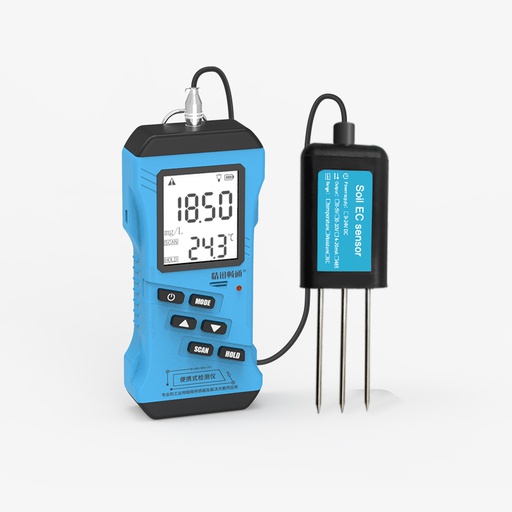Moderate soil moisture is an important condition for plant growth. Too much or lack of water will affect plant growth via the following aspects.
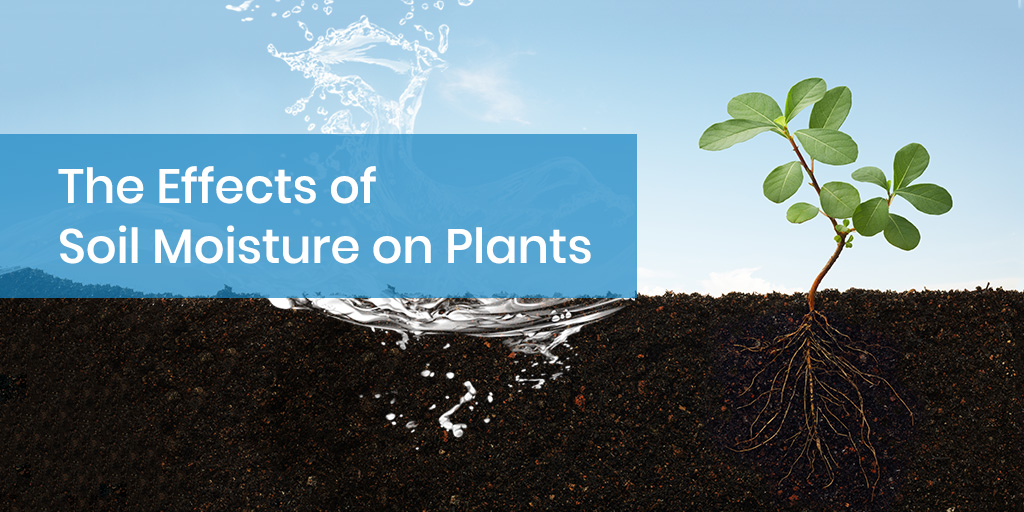
1. Effect on plant morphology
Plants perform photosynthesis and accumulate dry matter through the water supply. And the amount of accumulation is directly reflected in the dynamic changes of plant height, stem thickness, leaf area and yield. While lacking water, plants suffer from low growth, reduction of leaf photosynthetic areas and yield decrease.
2. Effect on leaf change
The leaf is the main place of photosynthesis and transpiration. Mesophyll cell expansion and leaf growth are very sensitive to water conditions. keeping leaves upright replies on the support of cellulose and the higher turgor pressure in the tissue. The plant wilting phenomenon that occurs when the plant lacks water is a manifestation of the decreased turgor pressure.
3. Effect on yield
Crop yield is the accumulation of energy transformation of solar energy into chemical energy on crops. Soil moisture conditions affect plant root water absorption and leaf transpiration, which further affect dry matter accumulation, and ultimately affect crop yield.
4. Effect on the growth of root and shoot
Plant roots are the main organs that absorb water. Its development is affected by many aspects, but the main is soil moisture and aeration. The soil moisture distribution affects the vertical distribution of the root system. When the soil water content is high, the resistance of the soil to the root diffusion becomes smaller, which is conducive to the occurrence of new roots. The soil usually contains a certain amount of available water, so the root system itself is not prone to water deficit. When the soil is dry or the water supply is insufficient, the root system absorbs limited water and firstly meets its own needs. Thus little water is delivered to the above-ground part of the plant. Therefore, when the soil moisture is insufficient, the effect on the above-ground part of the plant is greater than that of the underground part. As a result, the root-to-shoot ratio increases. On the contrary, if the soil moisture is too much and the soil aeration conditions are poor, the effect on the underground part is greater than the above-ground part. As a result, the root-to-shoot ratio will decrease. A moderate and slow water deficit can increase the absolute root weight, inhibit the growth of the above-ground parts, reduce the dry matter accumulation of the above-ground parts, and reduce the yield. But it is conducive to close planting, thereby increasing the total yield. Studies have shown that a certain period of water deficit is conducive to improving yield and quality. The drought in the early stage can enhance the drought resistance of the plant in the later stage. And the mild drought resistance in the seedling stage can enhance the “compensatory growth” of the root system and improve the drought resistance of the plant.
5. Effect on photosynthesis
Photosynthesis is the main source of energy for green plants. The photosynthetic rate is closely related to the water status of plants. Experiments have shown that when the water content of plant tissues is close to saturation, photosynthesis will be highest; when the water content is too much, the stomata will be passively closed and photosynthesis will be inhibited. When plants lack water, photosynthesis decreases; when leaves are wilted due to severe water shortage, photosynthesis declines sharply or even stops. Soil water conditions also affect the photosynthesis of plants. The decrease in soil water content causes a decrease in leaf water potential and an increase in stomatal resistance, which ultimately leads to increased leaf diffusion resistance, hindered CO2 diffusion and reduced photosynthetic rate.
6. Effect on organic matter transportation
As the water supply decreases, the leaf water potential decreases, and the assimilation material transported from the source leaf to the phloem decreases. There are two reasons. First, the leaf water potential decreases, then the photosynthetic rate decreases, so that the concentration of sucrose that can be transported out of the mesophyll cells becomes lower. Second, it is due to the reduction of the vertical movement speed of the mass flow in the sieve tube. Water is the medium for material transformation and transportation, and it also directly participates in certain biochemical reactions. Usually, the crops have insufficient water during the fruit swelling stage or the filling stage, and the photosynthesis and transportation are hindered so that the fruits and seeds cannot accumulate sufficient organic matter and become shriveled and thin. Therefore, in drought conditions, irrigation can speed up the transportation of organic matter. However, too much water is not conducive to the transportation of organic matter. Too much water will cause poor soil ventilation, then affect respiration and other metabolic processes.
7. Effect on the absorption and transportation of mineral elements
Minerals must be dissolved in water to be absorbed by plants. However, the amount of water absorbed by plants is disproportionate to the amount of mineral salt absorbed. Both types of absorption are very different due to environmental changes. The absorption of water and minerals by plants is both related and irrelevant. On the one hand, the salinity must be dissolved in water to be absorbed by the plant roots, and enters the roots of the plant with the water flow. On the other hand, the absorption mechanisms of the two are different. Water absorption is mainly passive absorption caused by plant transpiration, while mineral absorption is mainly active absorption that consumes metabolic energy.
8. Effect on seed germination
Water absorption is the main condition for seed germination. Only after seeds have absorbed enough water, various physiological and biochemical effects related to germination will gradually start. This is because water can swell and soften the seed coat, then oxygen can easily penetrate the seed coat into the seed to enhance the respiration of the embryo. At the same time, it is easy for the embryo to break through the seed coat. Also, the water can change the protoplasm from the gel state to the sol state, enhancing the metabolism. Under the action of a series of enzymes, the storage material of endosperm is gradually transformed into soluble material for embryo growth and differentiation;
Featured Product
EM500-SMT-MEC20 soil moisture sensor measures the moisture volume percentage through a way that meets the existing international soil moisture measurement standards. It is designed for the soil moisture monitoring, scientific experiments, smart irrigation, greenhouses, flowers and vegetables, grassland pastures, plant cultivation and sewage treatment and precision agriculture, etc.
“3-in-1” sensor that integrated with soil electrical conductivity, moisture, and temperature measurement.
It can be used for measuring the conductivity of water and fertilizer combination liquid, and other nutrient liquids mixed with substrates.
The electrode covers alloy material specially treated against powerful force and is not easy to damage or break.
Completely sealed and corrosion-resistant design. The probe can be buried directly in soil or into the water for long-term dynamic measuring.
- The probe insertion ensures high accuracy, fast response, good interchangeability, and reliable performance.
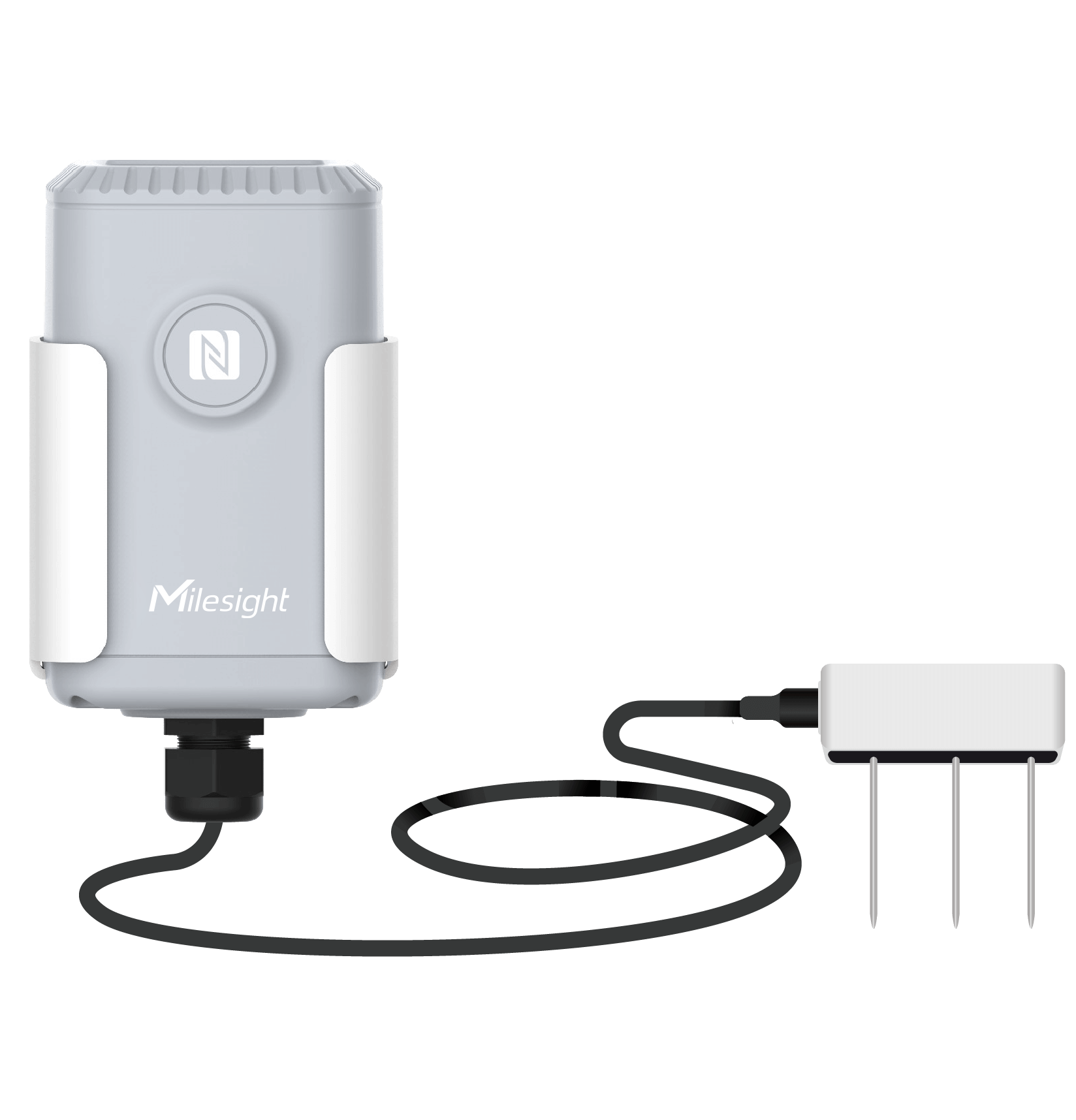

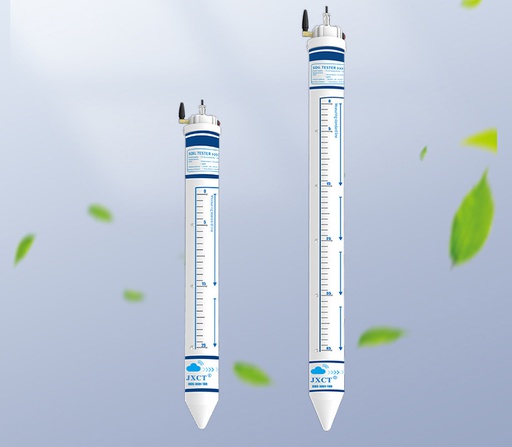
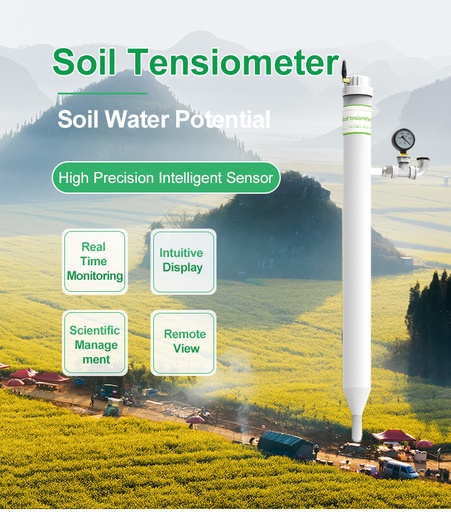
![[ARCHIVE] Speed Soil Measuring instrument](/web/image/product.template/49686/image_512/%5BARCHIVE%5D%20Speed%20Soil%20Measuring%20instrument?unique=539c3a4)
